An Experimental and Numerical Investigation of the Characteristics and Mechanism of Spacing Cracks in Loess Considering the Size Effect
Abstract
:1. Introduction
2. Experimental Materials and Methods
2.1. Materials
2.2. Experimental Set-Ups
2.3. Digital Image Correlation (DIC) Method
2.4. Discrete Element Method Based on MatDEM Software
3. Experimental Results
3.1. Influence of Sample Size on the Characteristics of Spacing Cracks
3.1.1. Variations of Spacing Cracking Parameters
3.1.2. Variations of Water Contents
3.2. Spacing Cracking Modes in Loess
3.2.1. Spacing Cracks in Opening Mode
3.2.2. Spacing Cracks in Mixed Opening-Sliding Mode
3.3. Spacing Crack Laws in Loess
3.3.1. The Appearance Order of Spacing Cracks
3.3.2. The Saturation of Spacing Cracks
- Estimation of local water content
- 2.
- Estimation of the local suction
- 3.
- Interpretation of saturation of spacing cracks
4. Numerical Simulation Results
5. Discussion
6. Conclusions
- (1)
- The characteristics of spacing cracks are greatly influenced by the dimensions of soil samples. As the volume of the specimen increases, the number of spacing cracks tends to decrease. Meanwhile, the average spacing between cracks also increases. The average crack width also increases with the increase in the average spacing of cracks. Once the volume of the specimen reaches 270 cm3 (3 cm × 3 cm × 30 cm), the number of spacing cracks does not increase anymore. The variations in crack ratio and the number of spacing cracks show the same tendency.
- (2)
- Different spacing cracking modes and laws in loess are interpreted in this research. Based on the digital image correlation (DIC) method, opening mode and mixed opening-sliding mode in spacing cracks are detected. In addition, two spacing cracking laws are interpreted. The first law is that a new crack is prone to appear between two pre-existing cracks. If the distance between two adjunct cracks is larger, the possibility of the generation of a new crack between them is larger. The second law is that when the number of cracks reaches a certain value, the energy in the soil is released so that no more cracks will be generated during the following desiccation. The number and the characteristics of existing cracks reach a stable state, which can be considered, as the “saturation of cracks”.
- (3)
- The numerical simulations were carried out on loess samples with different dimensions based on the discrete element method. The size effect on the characteristics of spacing cracks is verified, and the spacing cracking mechanism is better illustrated. In discrete element models, the number of spacing cracks increases with the increasing soil volume, which is consistent with the experimental results. In addition, the laws of the “insertion of cracks” and the “saturation of cracks” in loess are also observed in the simulation results.
- (4)
- The spacing cracks are concerned in the domains of geological, earth, materials, and engineering science. It is a mechanical phenomenon and scientific problem with multiple disciplines. The initiation, evolution, interaction, and stabilization of spacing cracks will decrease the strength of soil, damage the stability of the slope, and trigger geological disasters. Therefore, the study of the characteristics and mechanisms of spacing cracks is of great significance both in theory and engineering applications. However, there are some improvements that could be accomplished in this research. For example, the model used in the numerical simulation is linear elastic, which could be improved for a more precise simulation. In addition, the cracking mechanism under drying-wetting cycles could be investigated in the future.
Author Contributions
Funding
Institutional Review Board Statement
Informed Consent Statement
Data Availability Statement
Acknowledgments
Conflicts of Interest
References
- Liu, T.S.; Ding, Z.L.; Guo, Z.T. Loess, Environment and Global Change; Science Press: Beijing, China, 1991. [Google Scholar]
- Zhang, J.M.; Luo, Y.; Zhou, Z.; Victor, C.; Duan, M.D. Research on the rainfall-induced regional slope failures along the Yangtze River of Anhui, China. Landslides 2021, 18, 1801–1821. [Google Scholar] [CrossRef]
- Derbyshire, E. Geological hazards in loess terrain, with particular reference to the loess regions of China. Earth-Sci. Rev. 2011, 54, 231–260. [Google Scholar] [CrossRef]
- Wang, X.; Jiao, F.; Li, X.; An, S. The Loess Plateau. In Multifunctional Land-Use Systems for Managing the Nexus of Environmental Resources; Zhang, L., Schwarzel, K., Eds.; Springer: Cham, Switzerland, 2017. [Google Scholar] [CrossRef]
- Tsunekawa, A.; Liu, G.; Yamanaka, N.; Du, S. Ecological Research Monographs. In Restoration and Development of the Degraded Loess Plateau, China; Climate of the Loess Plateau, Chapter 2; Springer: Tokyo, Japan, 2014; pp. 23–33. [Google Scholar] [CrossRef]
- Xu, J.; Wu, Z.P.; Chen, H.; Shao, L.T.; Zhou, X.G.; Wang, S.H. Influence of dry-wet cycles on the strength behavior of basalt-fiber reinforced loess. Eng. Geol. 2022, 302, 106645. [Google Scholar] [CrossRef]
- Ma, P.; Peng, J.B.; Wang, Q.; Duan, Z.; Zhuang, J.Q. Loess landslides on the south Jingyang platform in Shaanxi Province, China. Q. J. Eng. Geol. Hydrogeol. 2019, 52, 547–556. [Google Scholar] [CrossRef]
- Zheng, X.X.; Xu, J.L.; Wang, H.X.; Liu, X.J.; Yao, D.F.; Lv, J. Health risk assessment of a reservoir-type water source in the northeastern region of China. Hum. Ecol. Risk Assess. 2017, 23, 751–766. [Google Scholar] [CrossRef]
- Nahlawi, H.; Kodikara, J.K. Laboratory experiments on desiccation cracking of thin soil layers. Geotech. Geol. Eng. 2006, 24, 1641–1664. [Google Scholar] [CrossRef]
- Trabelsi, H.; Hadrich, B.; Guiras, H. Evaporation, shrinkage and intrinsic permeability of unsaturated clayey soil: Analytical modelling versus experimental data. Arab. J. Geosci. 2018, 11, 184. [Google Scholar] [CrossRef]
- Vahedifard, F.; Robinson, J.D.; AghaKouchak, A. Can protracted drought undermine the structural integrity of California’s earthen levees? J. Geotech. Geoenviron. Eng. 2016, 142, 02516001. [Google Scholar] [CrossRef]
- Zuo, L.; Xu, L.; Baudet, B.A.; Gao, C.Y.; Huang, C. The structure degradation of a silty loess induced by long-term water seepage. Eng. Geol. 2020, 272, 105634. [Google Scholar] [CrossRef]
- Jiang, N.J.; Tang, C.S.; Yin, L.Y.; Xie, Y.H.; Shi, B. Applicability of Microbial Calcification Method for Sandy-Slope Surface Erosion Control. J. Mater. Civil Eng. 2019, 31, 04019250. [Google Scholar] [CrossRef]
- Zeng, H.; Tang, C.S.; Cheng, Z.; Vahedifard, F.; Cheng, Q.; Shi, B. Desiccation cracking of soil subjected to different environmental relative humidity conditions. Eng. Geol. 2022, 297, 106536. [Google Scholar] [CrossRef]
- Lu, Y.; Xu, J.L.; Wang, H.X.; Liu, X.J.; Li, W. Distribution, sources and health risk assessment of contaminations in water of urban park: A case study in Northeast China. Environ. Geochem. Health 2019, 41, 2473–2489. [Google Scholar] [CrossRef]
- Wang, Y.; Xia, A.; Qin, G. Probabilistic modeling for reliability analysis of buried pipelines subjected to spatiotemporal earthquakes. Probabilist. Eng. Mech. 2022, 69, 103315. [Google Scholar] [CrossRef]
- Corte, A.; Higashi, A. Experimental Research on Desiccation Cracks in Soil; Research Report U.S. Army Snow Ice & Permafrost Research Establishment: Wilmette, IL, USA, 1960. [Google Scholar]
- Morris, P.H.; Graham, J.; Williams, D.J. Cracking in drying soils. Can. Geotech. J. 1992, 29, 263–277. [Google Scholar] [CrossRef]
- Péron, H.; Hueckel, T.; Laloui, L.; Hu, L. Fundamentals of desiccation cracking of fine-grained soils: Experimental characterisation and mechanisms identification. Can. Geotech. J. 2009, 46, 1177–1201. [Google Scholar] [CrossRef]
- Tang, C.S.; Cui, Y.J.; Shi, B.; Tang, A.M.; Liu, C. Desiccation and cracking behaviour of clay layer from slurry state under wetting–drying cycles. Geoderma 2011, 166, 111–118. [Google Scholar] [CrossRef]
- Wei, X.; Hattab, M.; Taibi, S.; Bicalho, K.V.; Xu, L.; Fleureau, J.M. Crack development and coalescence process in drying clayey loess. Geomech. Eng. 2021, 25, 535–552. [Google Scholar] [CrossRef]
- Tang, C.S.; Shi, B.; Liu, C.; Zhao, L.; Wang, B. Influencing factors of geometrical structure of surface shrinkage cracks in clayey soils. Eng. Geol. 2008, 101, 204–217. [Google Scholar] [CrossRef]
- Costa, S.; Kodikara, J.; Shannon, B. Salient factors controlling desiccation cracking of clay in laboratory experiments. Géotechnique 2013, 63, 18–29. [Google Scholar] [CrossRef]
- Tang, C.S.; Cui, Y.J.; Tang, A.M.; Shi, B. Experiment evidence on the temperature dependence of desiccation cracking behavior of clayey soils. Eng. Geol. 2010, 114, 261–266. [Google Scholar] [CrossRef]
- Lakshmikantha, M.R.; Prat, P.C.; Ledesma, A. Experimental evidence of size effect in soil cracking. Can. Geotech. J. 2012, 49, 264–284. [Google Scholar] [CrossRef]
- Lakshmikantha, M.R.; Prat, P.C.; Ledesma, A. Boundary effects in the desiccation of soil layers with controlled environmental conditions. Geotech. Test. J. 2018, 41, 675–697. [Google Scholar] [CrossRef]
- Salimi, K.; Cerato, A.; Vahedifard, F.; Miller, G.A. Tensile Strength of Compacted Clays during Desiccation under Elevated Temperatures. Geotech. Test. J. 2021, 44, 1119–1134. [Google Scholar] [CrossRef]
- Salimi, K.; Cerato, A.; Vahedifard, F.; Miller, G.A. A temperature-dependent model for tensile strength characteristic curve of unsaturated soils. Geomech. Energy Environ. 2021, 28, 100244. [Google Scholar] [CrossRef]
- Kindle, E.M. Some factors affecting the development of Mud-Cracks. J. Geol. 1917, 25, 135–144. [Google Scholar] [CrossRef]
- Li, J.H.; Li, L.; Chen, R.; Li, D.Q. Cracking and vertical preferential flow through landfill clay liners. Eng. Geol. 2016, 206, 33–41. [Google Scholar] [CrossRef]
- Wu, H.Q.; Pollard, D.D. An experimental study of the relationship between joint spacing and layer thickness. J. Struct. Geol. 1995, 17, 887–905. [Google Scholar] [CrossRef]
- Tang, C.A.; Zhang, Y.B.; Liang, Z.Z.; Xu, T.; Tham, L.G.; Lindqvist, P.A.; Kou, S.Q.; Liu, H.Y. Fracture spacing in layered materials and pattern transition from parallel to polygonal fractures. Phys. Rev. E. Stat. Nonlin. Soft Matter. Phys. 2006, 73, 056120. [Google Scholar] [CrossRef]
- Xu, J.M. A study on formation conditions and mechanism of equal spacing fractures. Adv. Geosci. 1989, 1, 58–70. [Google Scholar]
- Bai, T.; Pollard, D.D. Fracture spacing in layered rocks: A new explanation based on the stress transition. J. Struct. Geol. 2000, 22, 43–57. [Google Scholar] [CrossRef]
- Karihaloo, B.L.; Abdalla, H.M.; Imjai, T. A simple method for determining the true specific fracture energy of concrete. Mag. Concrete Res. 2003, 55, 471–481. [Google Scholar] [CrossRef]
- Aveston, J.; Cooper, G.A.; Kelly, A. The Properties of Fiber Composites. In Proceedings of the National Physical Laboratory Conference, London, UK, 14–16 July 1971; IPC Science and Technology Press: Guildford, England, 1971; pp. 1254–1262. [Google Scholar]
- Karihaloo, B.L.; Nallathambi, P. Effective crack model for the determination of fracture toughness (KICe) of concrete. Eng. Fract. Mech. 1990, 35, 637–645. [Google Scholar] [CrossRef]
- Bažant, Z.P.; Xiang, Y. Crack growth and lifetime of concrete under long time loading. J. Eng. Mech. 1997, 123, 350–358. [Google Scholar] [CrossRef]
- ASTM Standard D2487; Standard Practice for Classification of Soils for Engineering Purposes (Unified Soil Classification System). American Society for Testing and Materials: West Conshohocken, PA, USA, 2021.
- Trabelsi, H.; Jamei, M.; Zenzri, H.; Olivella, S. Crack patterns in clayey soils: Experiments and Modeling. Int. J. Numer. Anal. Methods Geomech. 2012, 36, 1410–1433. [Google Scholar] [CrossRef]
- Imjai, T.; Kefyalew, F.; Aosai, P.; Garcia, R.; Kim, B.; Abdalla, H.M.; Raman, S.N. A new equation to predict the shear strength of recycled aggregate concrete Z push-off specimens. Cement Concrete Res. 2023, 169, 107181. [Google Scholar] [CrossRef]
- Lorenzino, P.; Beretta, G.; Navarro, A. Application of Digital Image Correlation (DIC) in resonance machines for measuring fatigue crack growth. Frat. Ed Integrità Strutt. 2014, 8, 369–374. [Google Scholar] [CrossRef]
- Le, T.C.; Liu, C.; Tang, C.S.; Zhang, X.Y.; Shi, B. Numerical Simulation of Desiccation Cracking in Clayey Soil Using a Multifield Coupling Discrete-Element Model. Geotech. Geol. Eng. 2022, 148, 04021183. [Google Scholar] [CrossRef]
- Zhang, G.H.; Yu, Q.C.; Wei, G.Q.; Chen, B.; Yang, L.S.; Hu, C.Y.; Li, J.P.; Chen, H.H. Study on the basic properties of the soda-saline soils in Songnen plain. Hydrogeol. Eng. Geol. 2007, 2, 37–40. [Google Scholar]
- Fang, H.Q.; Ding, X.M.; Jiang, C.Y.; Peng, Y.; Wang, C.Y. Effects of layer thickness and temperature on desiccation cracking characteristics of coral clay. B. Eng. Geol. Environ. 2022, 81, 391. [Google Scholar] [CrossRef]
- Bao, C.Y.; Tang, C.A.; Tang, S.B.; Cai, M.; Yu, Q. Study on the formation mode and mechanism of cracks on the surface of layered rock under uniaxial tension. Chin. J. Rock Mech. Eng. 2013, 32, 474–482. (In Chinese) [Google Scholar]
- Mu, Q.Y.; Dong, H.; Liao, H.J.; Zhou, C.; Li, S.B.; Zhang, J.W. Effects of in-situ wetting-drying cycles on the mechanical behaviour of an intact loess. Can. Geotech. J. 2022, 59, 1281–1284. [Google Scholar] [CrossRef]
- Yang, Z.T. Etude Expérimentale de la Fissuration Hydrique d’un sol Argileux; Univeristy of Lorraine: Nancy, France, 2022. (In French) [Google Scholar]
- Wei, X.; Hattab, M.; Bompard, P. Highlighting some mechanisms of crack formation and propagation in clays on drying path. Géotechnique 2016, 66, 287–300. [Google Scholar] [CrossRef]

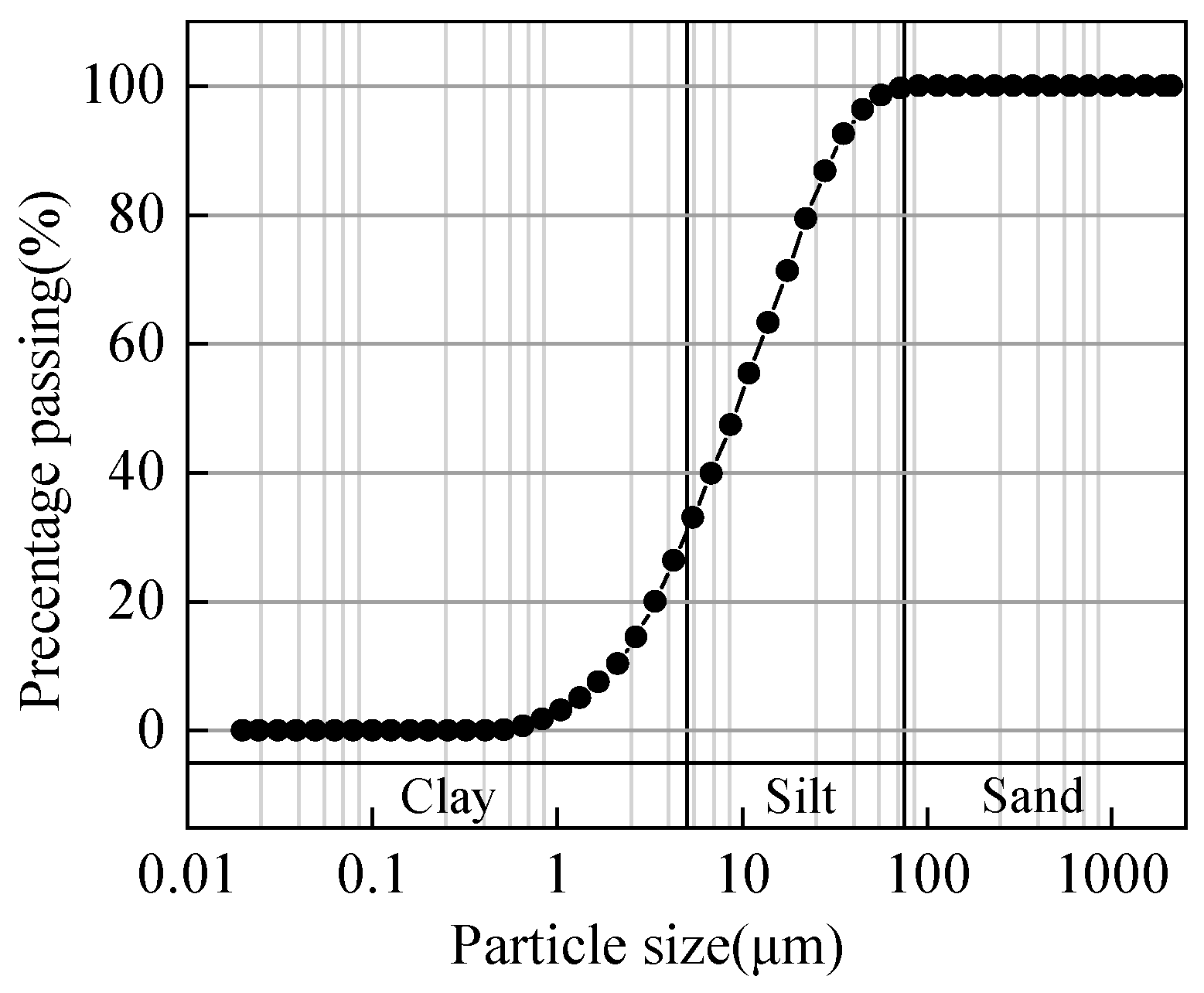

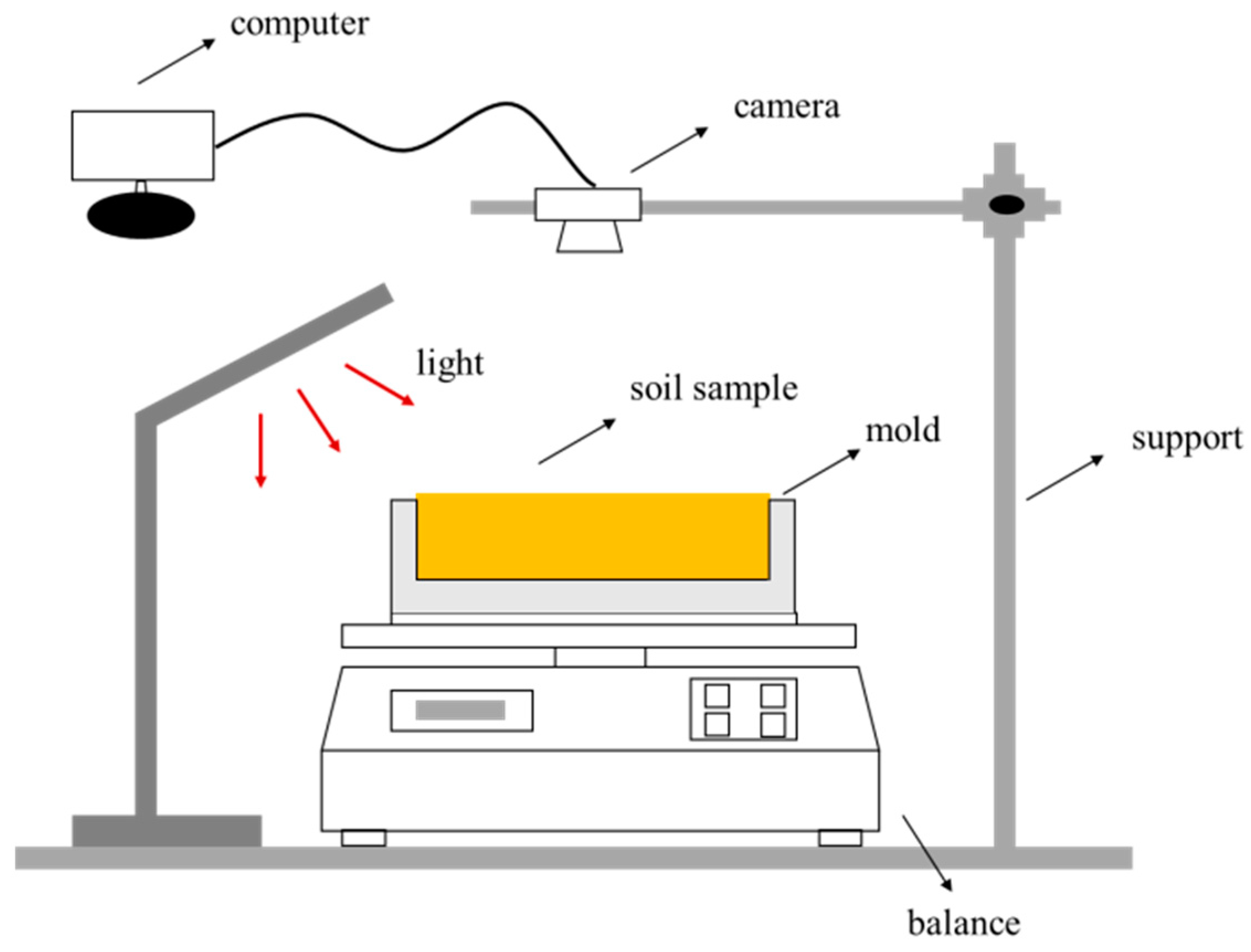
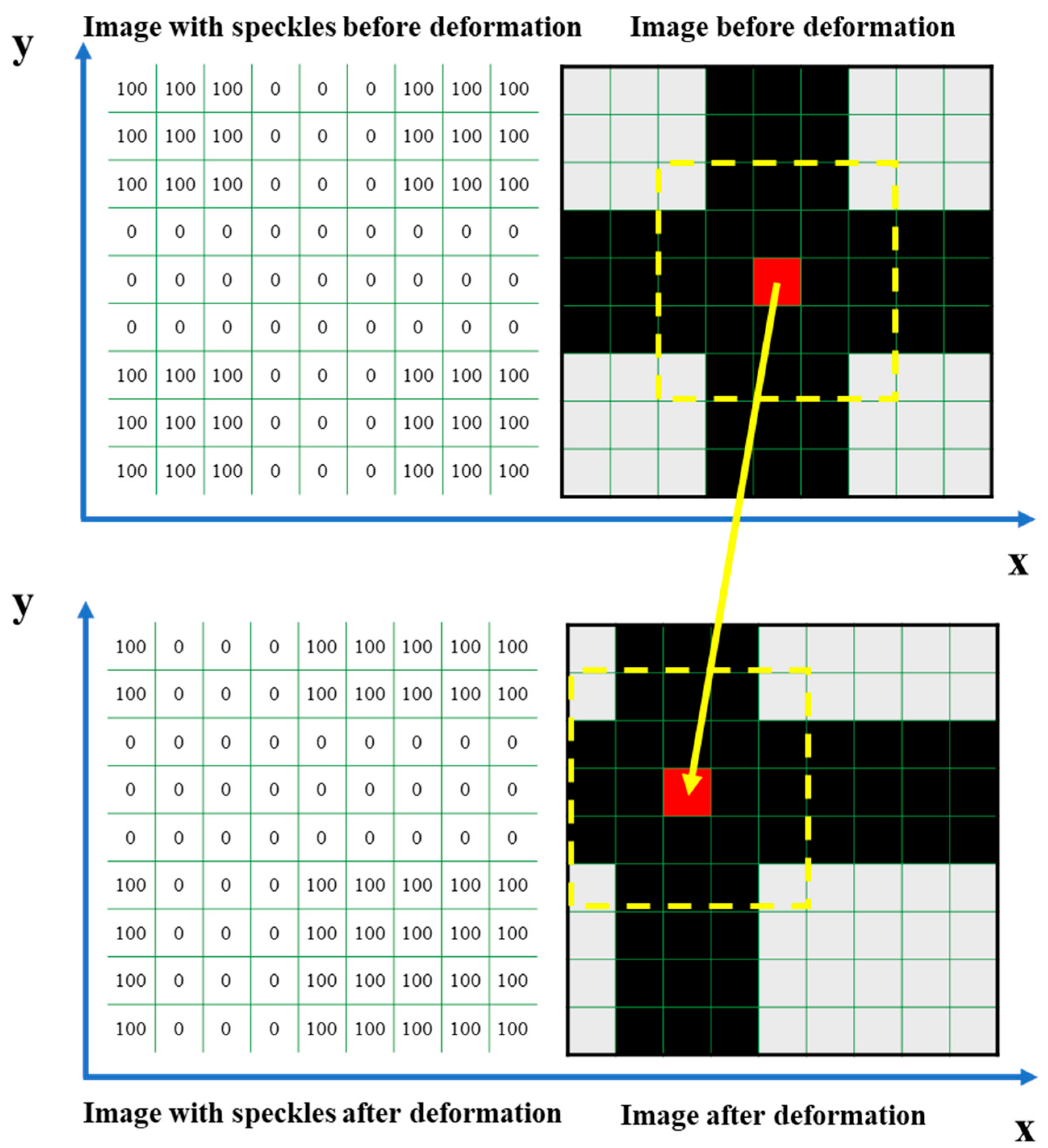
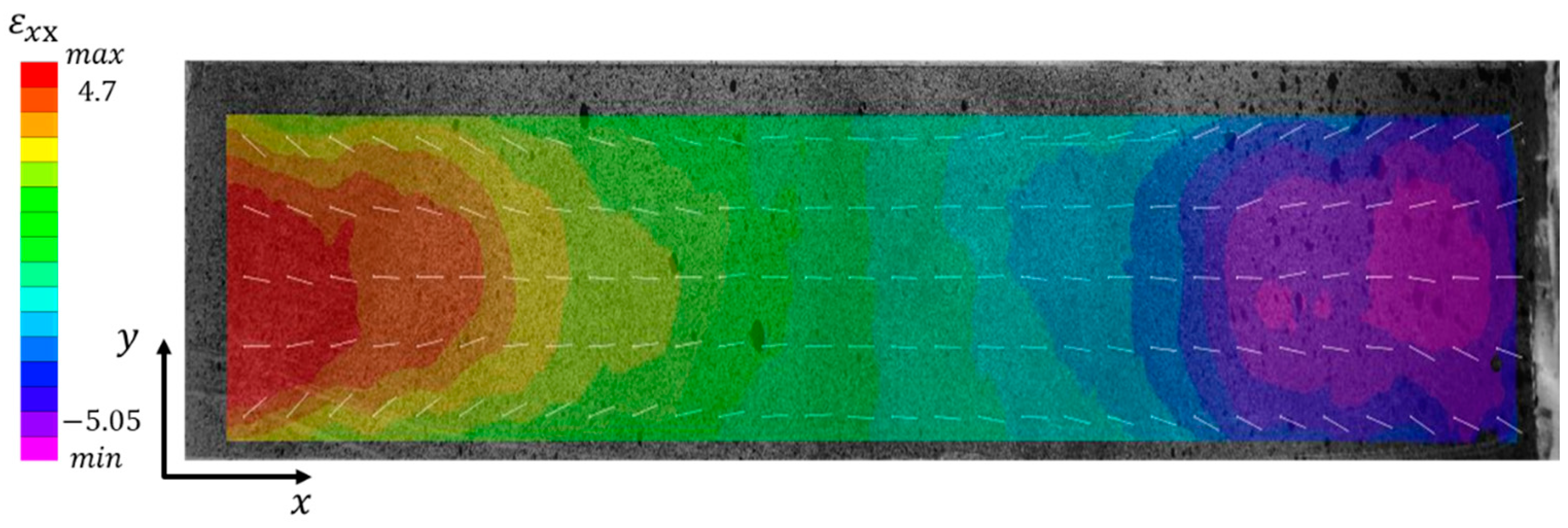


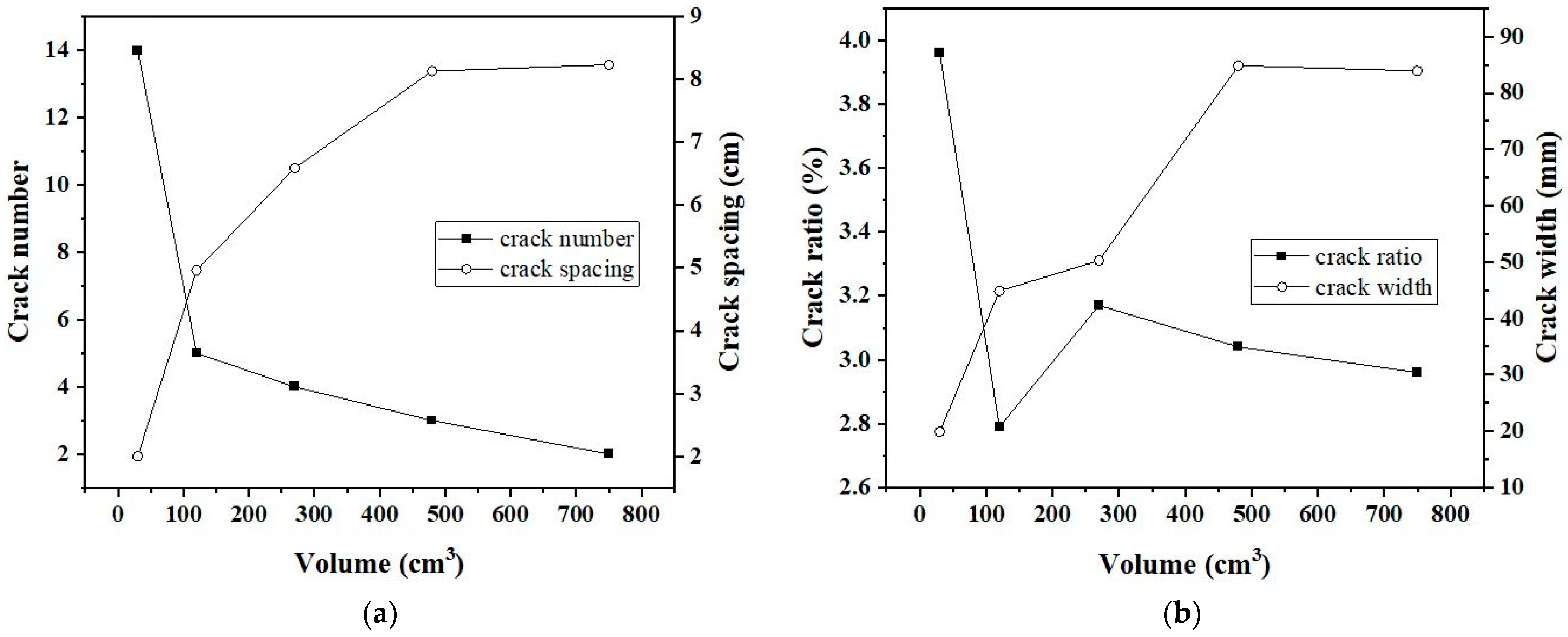
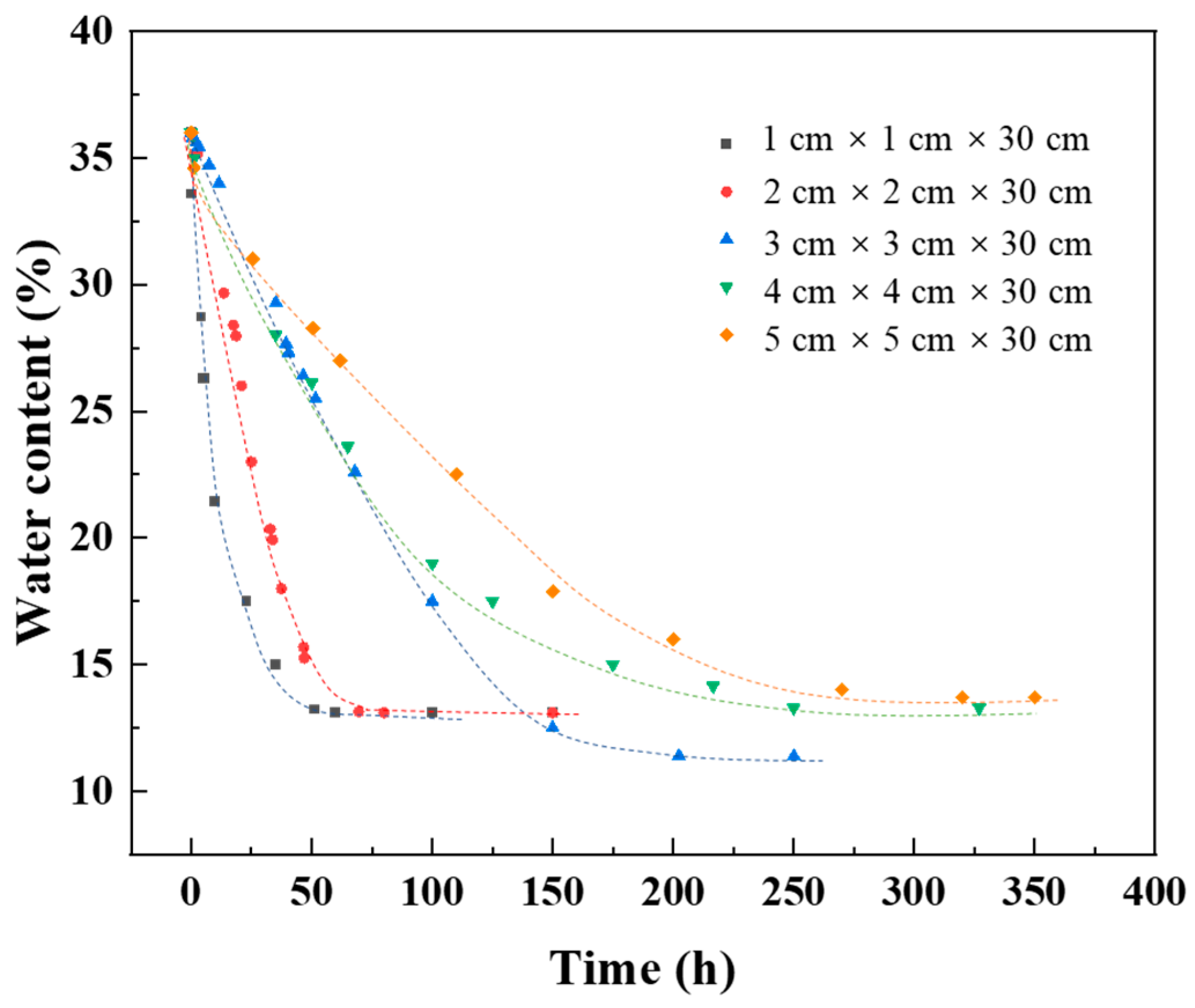

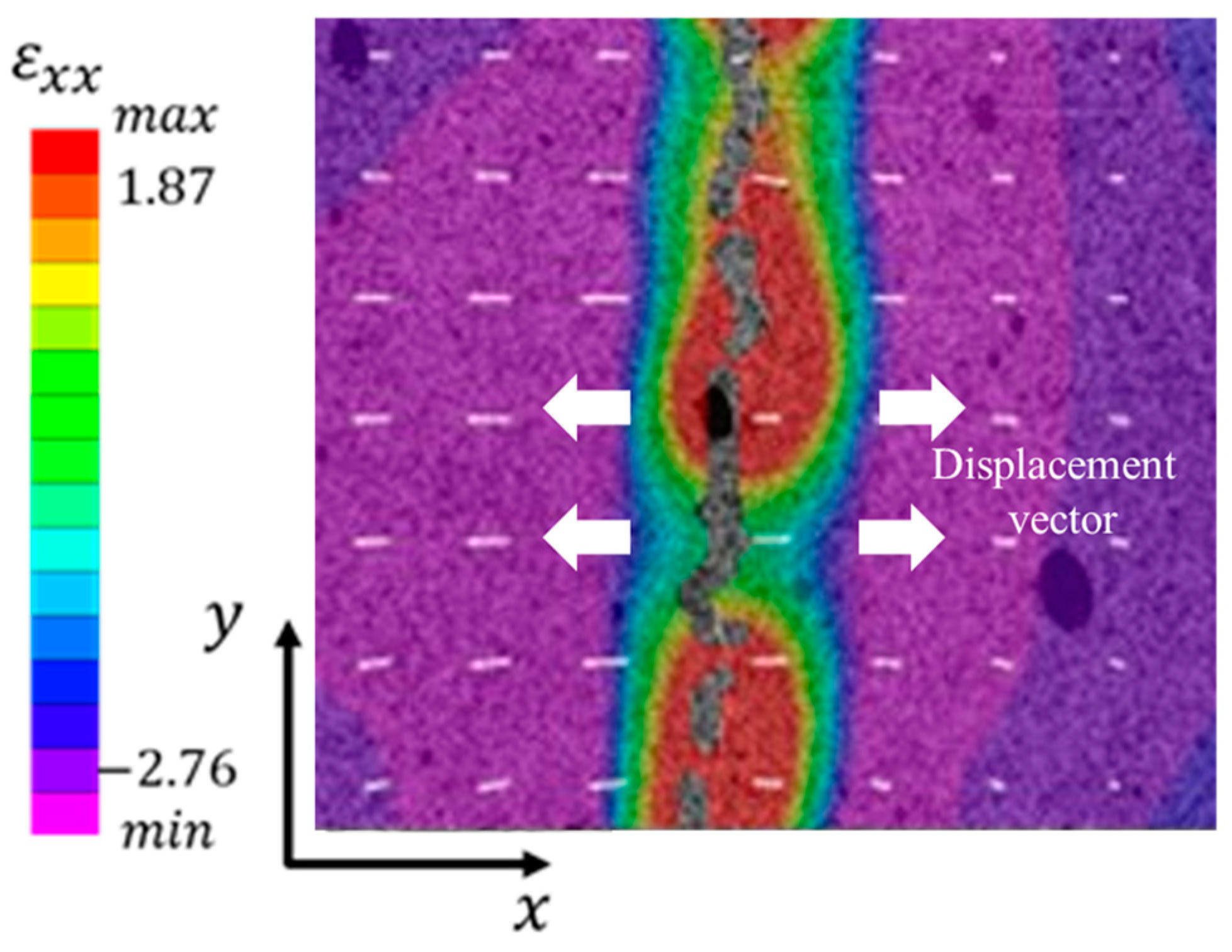

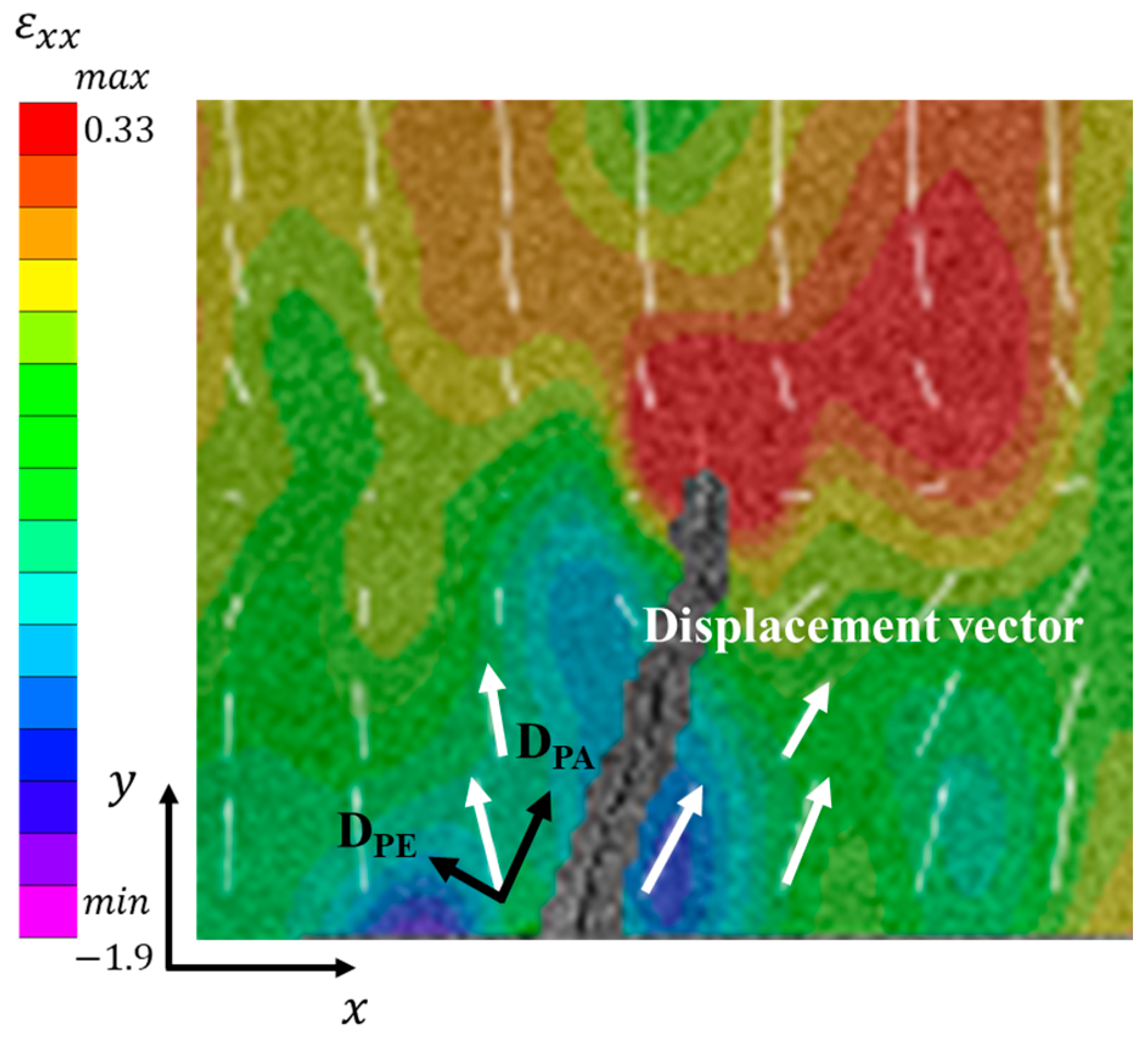
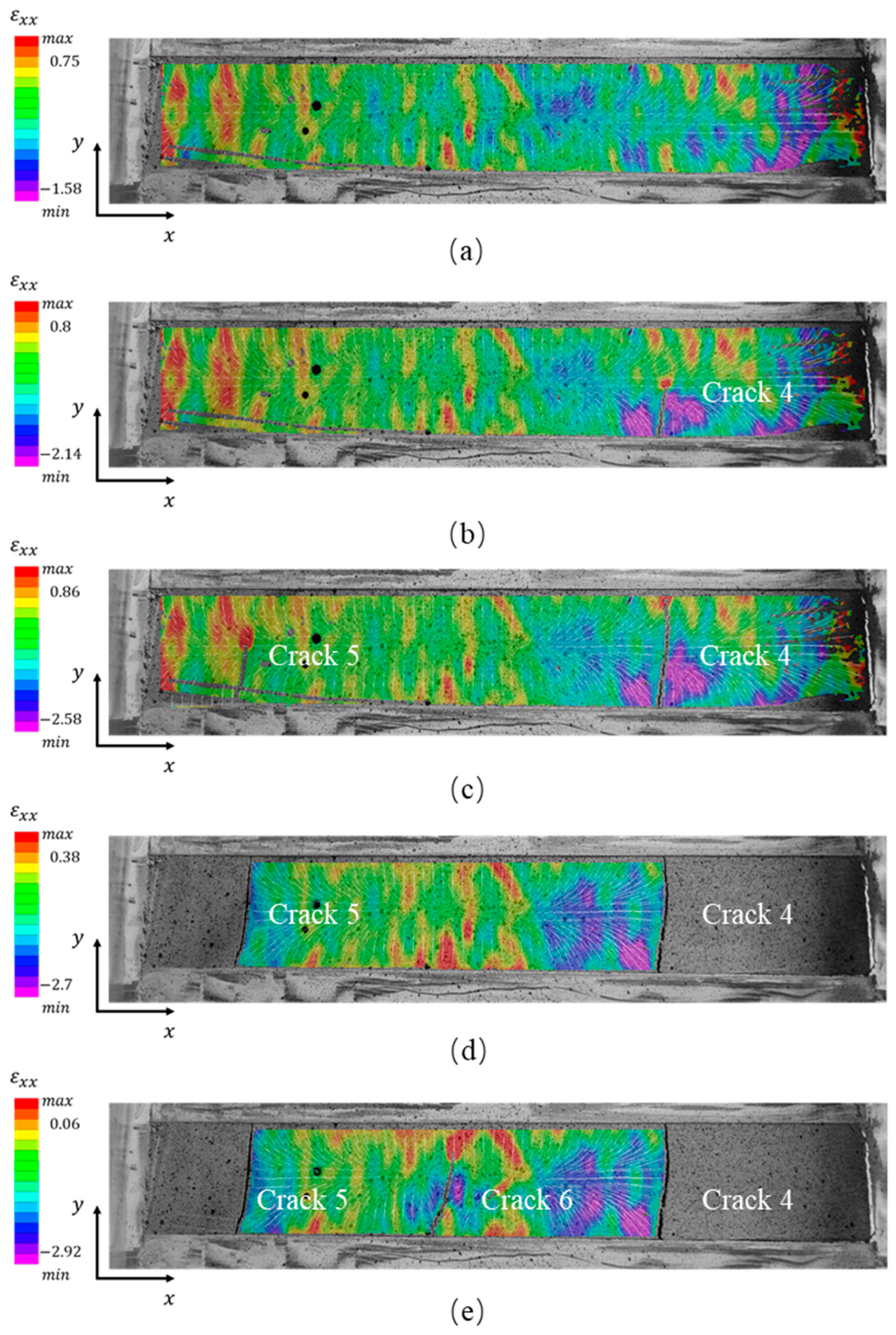
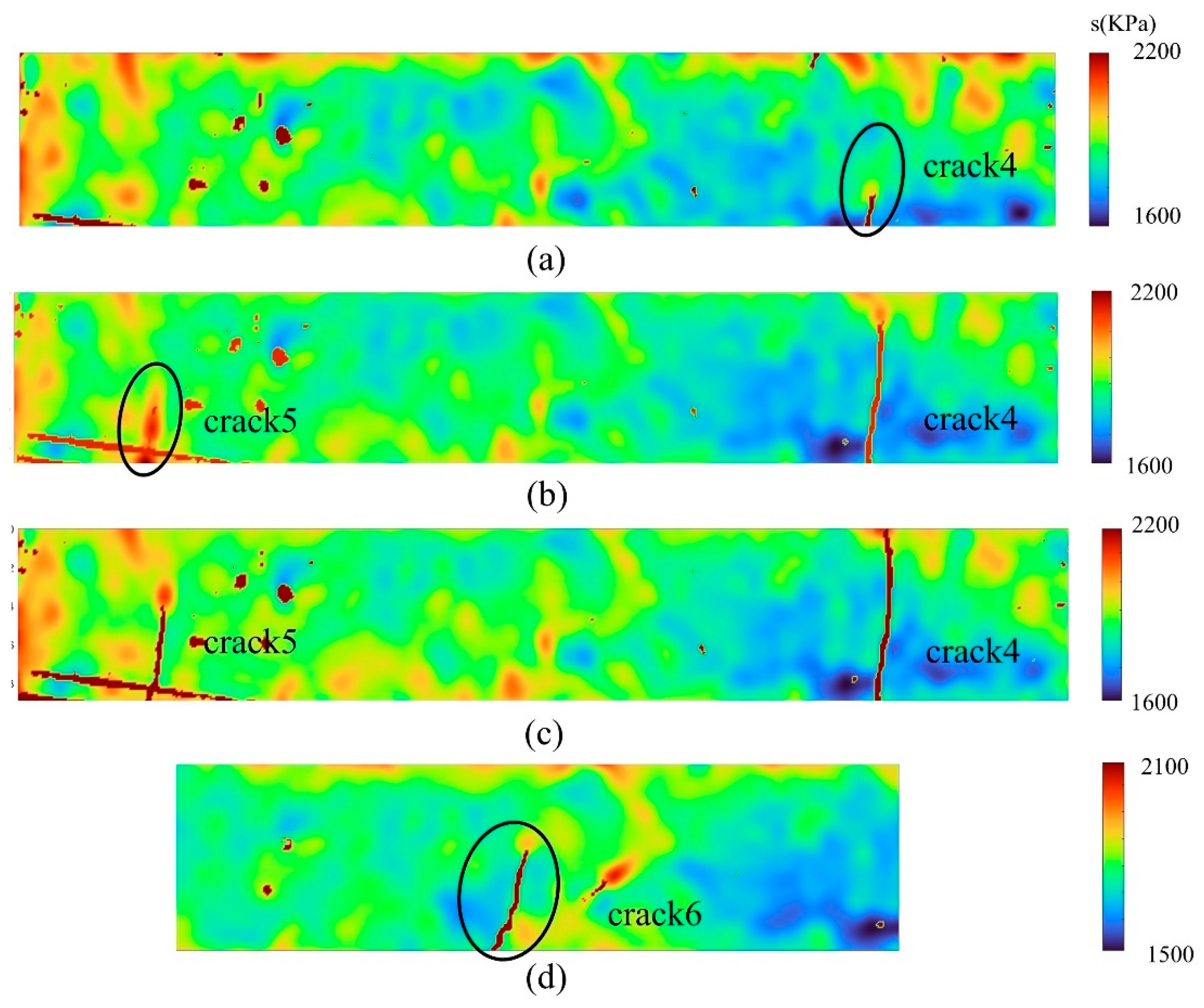

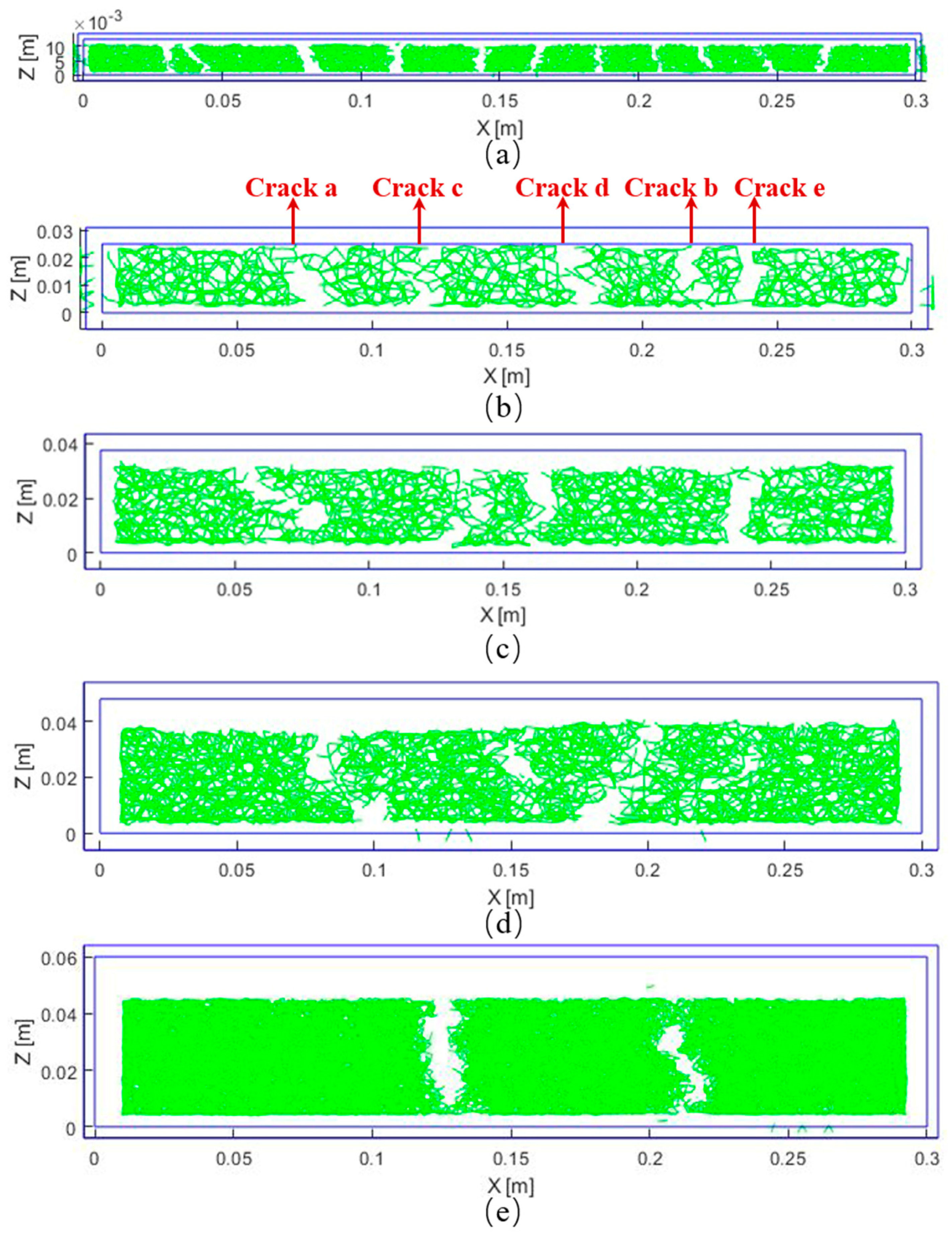
| Specific Gravity | Dry Density (g·cm−3) | Liquid Limit (%) | Plastic Limit (%) | Plasticity Index | Granulometry (%) | ||
|---|---|---|---|---|---|---|---|
| Sand Content (4.75–0.075 mm) | Silt Content (0.075–0.002 mm) | Clay Content (≤0.002 mm) | |||||
| 2.69 | 1.57 | 35.6 | 17.1 | 18.5 | 0.3 | 82.7 | 17 |
| Items | Parameters | |
|---|---|---|
| Camera | Brand | Nikon |
| Maximum resolution | 6000 × 4000 pixel | |
| Field of View | 90° | |
| Aperture | F16 | |
| Light | Brand | Opple |
| Power | 11 W | |
| Color temperature | 3900 k | |
| Balance | Brand | Lichen |
| Precision | 0.01 g | |
| Dimension of Soil Samples | 1 cm × 1 cm × 30 cm | 2 cm × 2 cm × 30 cm | 3 cm × 3 cm × 30 cm | 4 cm × 4 cm × 30 cm | 5 cm × 5 cm × 30 cm |
|---|---|---|---|---|---|
| Volume of soil samples (cm3) | 30 | 120 | 270 | 480 | 750 |
| Number of spacing cracks | 14 | 5 | 4 | 3 | 2 |
| Cracking ratio R (%) | 3.96 | 2.79 | 3.17 | 3.04 | 2.96 |
| Average width of cracks (cm) | 1.987 | 4.488 | 5.025 | 8.487 | 8.392 |
| Average spacing of cracks (cm) | 2 | 4.96 | 6.59 | 8.13 | 8.23 |
| Time | t = 58 h | t = 58.17 h | t = 58.5 h | t = 58.67 h |
|---|---|---|---|---|
| Max. (%) | 0.548 | 1.225 | 2.22 | 1.87 |
| Min. (%) | −2.448 | −2.505 | −2.67 | −2.76 |
| Time | t = 8.67 h | t = 9 h | t = 9.33 h |
|---|---|---|---|
| Max. (%) | 0.51 | 0.51 | 0.33 |
| Min. (%) | −1.6 | −1.66 | −1.9 |
| Time | t = 11 h | t = 13.33 h | t = 15 h | t = 21 h | t = 25.67 h |
|---|---|---|---|---|---|
| Max. (%) | 0.75 | 0.8 | 0.86 | 0.38 | 0.06 |
| Min. (%) | −1.58 | −2.14 | −2.58 | −2.7 | −2.92 |
| Number of Cracks | Experiments | Numerical Simulations |
|---|---|---|
| 1 cm × 1 cm × 30 cm | 14 | 11 |
| 2 cm × 2 cm × 30 cm | 5 | 5 |
| 3 cm × 3 cm × 30 cm | 4 | 4 |
| 4 cm × 4 cm × 30 cm | 3 | 3 |
| 5 cm × 5 cm × 30 cm | 2 | 2 |
Disclaimer/Publisher’s Note: The statements, opinions and data contained in all publications are solely those of the individual author(s) and contributor(s) and not of MDPI and/or the editor(s). MDPI and/or the editor(s) disclaim responsibility for any injury to people or property resulting from any ideas, methods, instructions or products referred to in the content. |
© 2023 by the authors. Licensee MDPI, Basel, Switzerland. This article is an open access article distributed under the terms and conditions of the Creative Commons Attribution (CC BY) license (https://creativecommons.org/licenses/by/4.0/).
Share and Cite
Wei, X.; Zhou, Y.; Chen, X. An Experimental and Numerical Investigation of the Characteristics and Mechanism of Spacing Cracks in Loess Considering the Size Effect. Sustainability 2023, 15, 12482. https://doi.org/10.3390/su151612482
Wei X, Zhou Y, Chen X. An Experimental and Numerical Investigation of the Characteristics and Mechanism of Spacing Cracks in Loess Considering the Size Effect. Sustainability. 2023; 15(16):12482. https://doi.org/10.3390/su151612482
Chicago/Turabian StyleWei, Xin, Yunru Zhou, and Xuanyi Chen. 2023. "An Experimental and Numerical Investigation of the Characteristics and Mechanism of Spacing Cracks in Loess Considering the Size Effect" Sustainability 15, no. 16: 12482. https://doi.org/10.3390/su151612482





